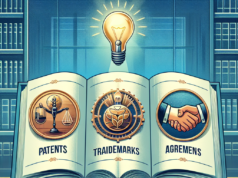
In an era where creativity is both celebrated and commodified, the concept of fair use has emerged as a critical battleground for artists, educators, and content creators. Fair use allows for the limited use of copyrighted material without permission from the rights holders, fostering innovation and cultural exchange. However, the nuances of fair use are often shrouded in ambiguity, leading to disputes that can have significant implications for creative rights. This article delves into the complexities of fair use, exploring its legal framework, real-world applications, and the ongoing tensions between copyright holders and creative innovators.
Understanding Fair Use: A Comprehensive Overview of Creative Rights and Limitations
Fair use is a legal doctrine that permits the use of copyrighted material under certain conditions without the need for permission from the copyright owner. It is rooted in the principle of promoting the progress of science and the useful arts, as outlined in the U.S. Constitution. The doctrine is designed to balance the interests of copyright holders with the public’s right to access and utilize creative works. Fair use is not a blanket exemption; rather, it is determined on a case-by-case basis, taking into account factors such as the purpose of use, the nature of the copyrighted work, the amount used, and the effect on the market value of the original work. This multifaceted approach allows for flexibility but also introduces uncertainty, making it essential for creators to navigate the intricacies of fair use carefully.
The Legal Framework: Key Laws and Regulations Governing Fair Use in Creative Works
The legal framework surrounding fair use is primarily established by the Copyright Act of 1976, which outlines the conditions under which fair use may be claimed. Section 107 of the Act explicitly enumerates the four factors that courts consider when evaluating fair use claims. Additionally, landmark cases such as Campbell v. Acuff-Rose Music, Inc. and Sony Corp. of America v. Universal City Studios, Inc. have further defined the boundaries of fair use, emphasizing the importance of transformative use and the impact on the market. Internationally, fair use is mirrored by similar doctrines, such as “fair dealing” in countries like Canada and the UK, though the specific criteria and applications can vary significantly. As digital content continues to proliferate, the legal landscape surrounding fair use is evolving, prompting ongoing discussions about the adequacy of existing laws in addressing contemporary challenges.
Common Scenarios: Analyzing Real-World Fair Use Disputes in Various Creative Industries
Fair use disputes manifest across a wide array of creative industries, each presenting unique challenges and considerations. In the realm of education, for instance, teachers often rely on fair use to incorporate copyrighted materials into their lesson plans, leading to conflicts with publishers who argue that such practices undermine their market. Similarly, in the music industry, sampling has become a contentious issue, with artists facing lawsuits for using snippets of existing songs without permission. The film and television sectors also grapple with fair use, particularly in the context of commentary, criticism, and parody. High-profile cases, such as the dispute between the creators of The Simpsons and the estate of Dr. Seuss, illustrate the complexities of determining what constitutes fair use in a rapidly changing media landscape. These scenarios highlight the need for clear guidelines and a nuanced understanding of fair use to navigate the intricate web of creative rights.
The Role of Courts: How Judicial Interpretations Shape Fair Use Precedents and Outcomes
The judiciary plays a pivotal role in shaping the landscape of fair use through its interpretations and rulings. Courts are tasked with applying the four factors of fair use to specific cases, often leading to divergent outcomes based on the unique circumstances presented. Judicial decisions not only establish precedents but also influence how creators approach the use of copyrighted materials. For example, the Google Books case underscored the importance of transformative use, with the court ruling that digitizing and indexing books for search purposes constituted fair use. Conversely, cases like Harper & Row v. Nation Enterprises demonstrated the potential limitations of fair use, particularly when the use in question could harm the market for the original work. As courts continue to adjudicate fair use disputes, their interpretations will undoubtedly shape the future of creative rights and the balance between protection and innovation.
Balancing Interests: The Tension Between Copyright Holders and Creative Innovators
The tension between copyright holders and creative innovators is a defining feature of the fair use debate. Copyright owners, often motivated by the desire to protect their intellectual property and revenue streams, may view fair use as a threat to their rights. Conversely, creators and innovators argue that fair use is essential for fostering creativity, cultural dialogue, and the evolution of artistic expression. This dichotomy is particularly pronounced in the digital age, where the ease of access to and distribution of content has blurred the lines of ownership and usage. As a result, many creators find themselves navigating a precarious landscape, where the fear of litigation can stifle creativity and collaboration. Striking a balance between protecting the rights of copyright holders and promoting the interests of creative innovators remains a critical challenge for policymakers, legal experts, and the creative community.
Future Implications: Emerging Trends and Challenges in Fair Use and Creative Rights Disputes
As technology continues to evolve, the implications for fair use and creative rights are becoming increasingly complex. The rise of artificial intelligence, for instance, raises questions about the ownership of generated content and the applicability of fair use in this context. Additionally, the proliferation of social media platforms has transformed how content is shared and consumed, leading to new challenges in enforcing copyright and navigating fair use. Emerging trends, such as the growing emphasis on user-generated content and the increasing importance of digital literacy, further complicate the landscape. As stakeholders grapple with these developments, ongoing dialogue and collaboration will be essential to address the challenges posed by an ever-changing creative environment. The future of fair use will depend on the ability of creators, copyright holders, and legal experts to adapt to these shifts while ensuring that the fundamental principles of creativity and innovation are preserved.
In conclusion, the intricacies of fair use and the disputes surrounding creative rights underscore the need for a nuanced understanding of this vital legal doctrine. As the creative landscape continues to evolve, the balance between protecting intellectual property and fostering innovation will remain a critical issue. By examining the legal framework, real-world scenarios, and the role of the judiciary, we can better appreciate the complexities of fair use and its implications for the future of creativity. As we move forward, it is imperative that all stakeholders engage in constructive dialogue to navigate the challenges and opportunities that lie ahead in the realm of creative rights.



























